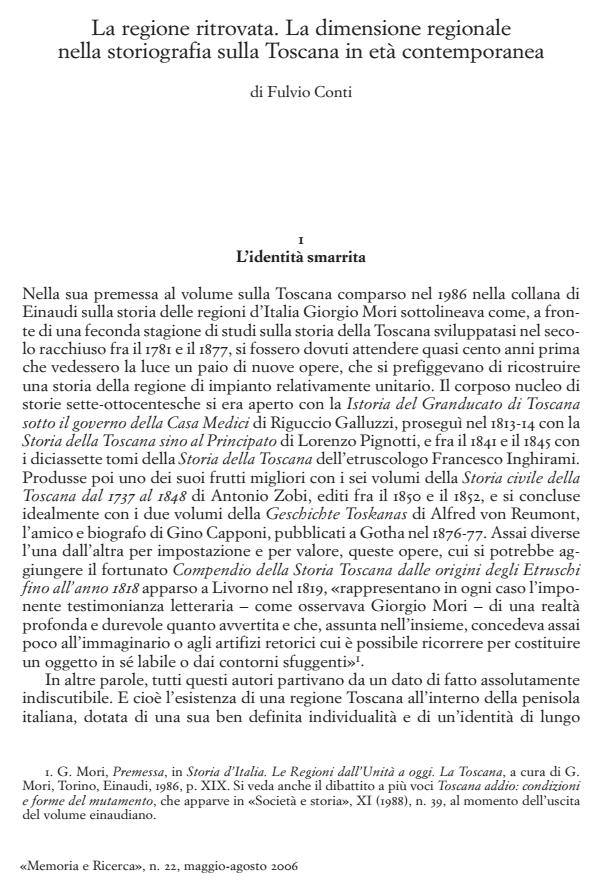La regione ritrovata. La dimensione regionale nella storiografia sulla Toscana in età contemporanea
Titolo Rivista MEMORIA E RICERCA
Autori/Curatori Fulvio Conti
Anno di pubblicazione 2006 Fascicolo 2006/22 Lingua Italiano
Numero pagine 14 P. 53-66 Dimensione file 90 KB
DOI
Il DOI è il codice a barre della proprietà intellettuale: per saperne di più
clicca qui
Qui sotto puoi vedere in anteprima la prima pagina di questo articolo.
Se questo articolo ti interessa, lo puoi acquistare (e scaricare in formato pdf) seguendo le facili indicazioni per acquistare il download credit. Acquista Download Credits per scaricare questo Articolo in formato PDF

FrancoAngeli è membro della Publishers International Linking Association, Inc (PILA)associazione indipendente e non profit per facilitare (attraverso i servizi tecnologici implementati da CrossRef.org) l’accesso degli studiosi ai contenuti digitali nelle pubblicazioni professionali e scientifiche
in the historiography about Tuscany in contemporary age The large number of historiografical works between 1781 and 1877 has pointed out Tuscany like a relatively unitary region, coinciding with the State formed in Medici’s age. At the period of Italy’s unity it maybe was the only true regional reality. After 1877 that identity progressively lost weight and historiography didn’t show attention at that case study. In the cultural clash between manifestations of municipal pride and necessity to build a national feeling, region didn’t find attention. From second afterwar historiography shows a new attention toward Tuscany as a region, excited from the request of actual institution of the Region, as provided for Constitution. Public bodies, institutes and associations of different kind have given a new impulse to regional history: prevalently come out the achievement of a long civic tradion and more recent identity based on Resistance’s values.;
Fulvio Conti, La regione ritrovata. La dimensione regionale nella storiografia sulla Toscana in età contemporanea in "MEMORIA E RICERCA " 22/2006, pp 53-66, DOI: